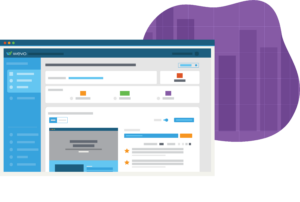Contents
- 1 I failed so you don’t have to. Here are three critical lessons I learned for effective UX Research democratization.
- 2 Lesson One: You can’t turn non-researchers into UX experts overnight
- 3 Lesson Two: Identify the right type of research to target through “sensible democratization”
- 4 Lesson Three: Consider the Context
- 5 Takeaways and Final Thoughts on UX Research Lessons
I failed so you don’t have to. Here are three critical lessons I learned for effective UX Research democratization.
I have been thinking a lot about research democratization for the past couple of years. If you are a researcher, you probably have been too. Democratizing research is about empowering anyone in the organization to create and consume user insights to make more informed decisions. I am going to delve into just one aspect – allowing non-researchers to conduct studies.
The professed benefits of this facet of research democratization include the ability to:
- Enable organizations to scale insight volume and velocity
- Free up research team’s time
My team at my previous company spent a tremendous amount of energy in the past two years rolling out a democratization program that, frankly, took more time and effort to deliver than the value it provided to the research team and the wider organization. I want to share what I learned from that experience.
We found that the emphasis on scaling insight volume and speed overstated and the promise of freeing up researcher time unrealized. But I do think there is value in democratizing some research activities as part of a quest to increase empathy and drive customer-centric decision making into the organization.
Here’s what I learned and what I would do differently next time:
Lesson One: You can’t turn non-researchers into UX experts overnight
Our primary approach was to take product and design folks through a user experience research bootcamp consisting of a series of workshops that covered such topics as framing research questions, interviewing best practices, and analyzing reports. After the workshops, we held office hours where colleagues could receive tailored coaching.
Looking back, it seems that the user research learning curriculum was at once “too much” and “not enough.” We were trying to strike the right balance of “just enough” training but, as with any profession, there is a lot to learn! We delved into the intricacies and challenges of recruiting as well as documentation and report writing best practices. We received partner feedback that this felt like too much was expected of them. In terms of “not enough,” we just didn’t see the uptick in self-service research volume that we expected and warranted all the hours that went into designing and delivering the training.
It’s important to note that at this point, the organization did not have a vendor tool to assist with conducting research so we were expecting our partners to carry out all the interviews 1-1 and write a report, just as a professional researcher would do. I believe that this is too big an ask moving forward and obtaining robust, easy to use research tools to set up and conduct unmoderated studies is key.
One advantage of WEVO’s approach is the easy intake form which kicks off the process. You don’t need to be a UX expert to launch a WEVO test, because our team of human experts is there to provide guardrails and ensure that the test will gather feedback in a way that mitigates traditional survey bias. This saves valuable time, as your organization doesn’t need to try to cram a career’s worth of UX training into a single workshop.
Lesson Two: Identify the right type of research to target through “sensible democratization”
I’ve talked with a dozen or so research leaders about what types of research they are democratizing, and the answers vary. One leader had the explicit goal to get their researchers out of the business of conducting any evaluative research and to shift that completely to product and design, freeing researchers to focus on more strategic and foundational research.
Others are taking a risk mitigation (“sensible democratization”) approach and only democratizing unmoderated research activities for simpler, evaluative studies.
We will adopt the latter camp of “sensible democratization” as we believe that even a purely evaluative study can be complex enough to warrant a trained researcher and can also yield strategic insights beyond the prototype that we want to ensure are captured.
Empowering Product and Design to run some of their own research does not mean that the Research team lets them run wild. In fact, most leaders stressed that a successful research democratization effort required a dedicated program manager to train, coach and consult to teams, giving support across intake, recruiting, prototyping, and template creation. Also critical is the creation of research templates and oversight of analysis.
It’s also crucial to identify, account for, and manage those invisible or overlooked tasks, such as prototype creation. This would likely entail having a dedicated resource, either a researcher or someone from Research Operations, to manage the democratization program and provide services such as initial intakes with the team to flag issues and verify prototype creation as well as to set expectations and give tips for conducting research.
The research team must be firm and clear on which types of inquiry are appropriate for democratization and that it is not ever about handing over the practice of research. This diagram inspired by the work of Behzod Sirjani offers a continuum framework to categorize different research types.
A good rule of thumb is if the risk is low, democratization may be a great way to reduce the burden on the research team, freeing up their time and skills for higher stakes investigations. But as noted above, there is an up-front investment of time in training/coaching of others before any efficiencies can be gained from the primary research team. And, remember, a dedicated resource to manage the democratization program also reduces the supposed efficiency benefit.
Tests that are more affordable and faster inherently have lower risk for companies. WEVO’s methodology ensures that tests can be conducted quickly, effortlessly, and of course, reliably. The platform uses AI to do the heavy lifting (provisioning a panel at scale, analyze data, etc) while human experts provide oversight and synthesize the data into expert recommendations.
Lesson Three: Consider the Context
When I say, “consider the context,” I mean both the type and topic of the research as well as the organizational context. Most agree that simple A/B testing and straightforward evaluative research are ripe for democratization (some also include very early concept testing but I’m a little nervous about “Don’t you LOVE this idea?!” style concept testing).
But organizational context also matters and, at the highest level, concerns questions like, “how ready is this organization for research democratization?” and “who in the organization is capable of doing research?”
Organizational readiness for democratizing UX research has several facets:
- How well established is the research function?
- What is the level of trust between Product, Design, and Research?
- How should democratization be operationalized and managed?
Democratization efforts should be embarked on only when the research function is well established and mature. Only when this foundation exists and the organization has a deep appreciation for robust research does it make sense to start letting partners conduct their own experiments.
Trust matters and is unlikely to be evenly distributed. We are opening up our practice and need to trust that our partners can perform experiments that produce valid results. We have all worked with research-savvy product managers and designers and I recommend inviting them into a research democratization pilot first rather than opening the gates up to everyone. That will allow you to have a small cohort of partners to train, coach, and learn what is working and what needs tweaking.
It’s equally critical to note that democratizing research may not be a way to save time for the research team, as overseeing and coaching others to conduct research may, especially at the beginning, take the same amount of time as leading the study. The primary benefits of democratization are around building empathy for the customer and deepening understanding of customer needs across a greater number of people in different roles across the organization.
In order to drive that deeper understanding, insights need to be digestible for all parts of the organization – especially those teams without a UX research background. WEVO offers a collaboration-friendly dashboard that displays key findings and allows your entire team to upvote the insights that they feel will drive a better customer experience. User feedback is also benchmarked against five diagnostics from your product or industry, so you’ll have the necessary context behind your findings.
Takeaways and Final Thoughts on UX Research Lessons
Today where I’ve landed from these learnings is 1) it’s not about handing over the reins, the process still needs to be managed and oversight is necessary and 2) we need to be mindful and deliberate about the types of research efforts we democratize. A simple A/B test, sure, an unmoderated evaluative study, sure. Basically, when the stakes are low and the trust is high, go for it.
The next time I embark on this type of effort, I will not frame it as a time or resource saving approach, but rather as a play to empower non-researchers to experiment and learn directly from customers. And, far from “giving away our influence” I think that our partners will grow to appreciate our expertise even more.
About the Author
Robin Beers, PhD is a director of research at Workday. She leads at the intersection of insights and organizational transformation. She holds a doctorate in organizational psychology.



